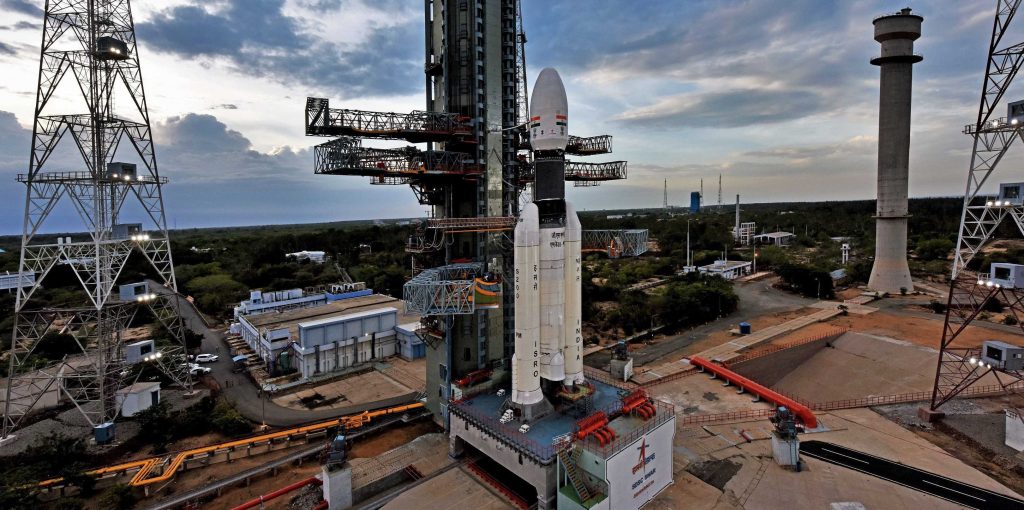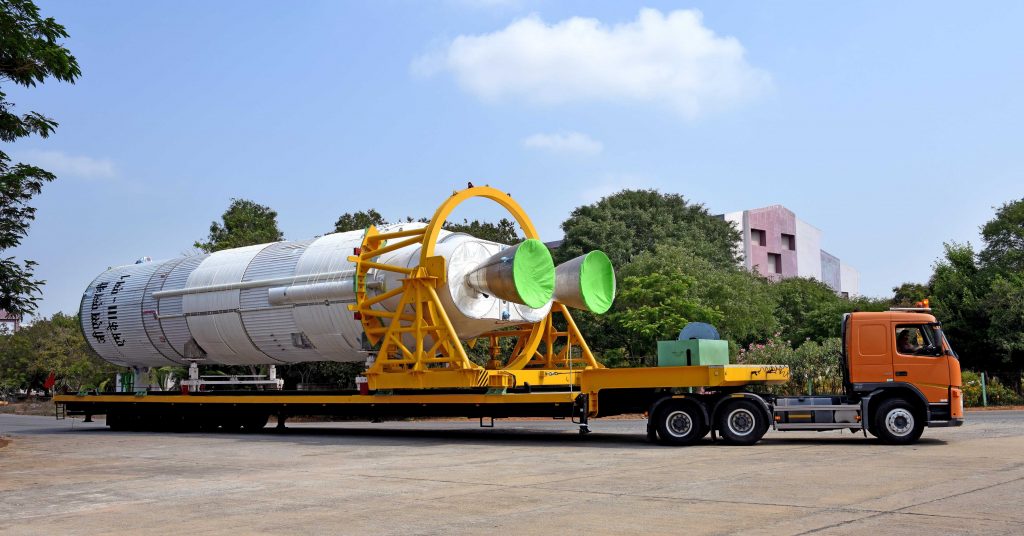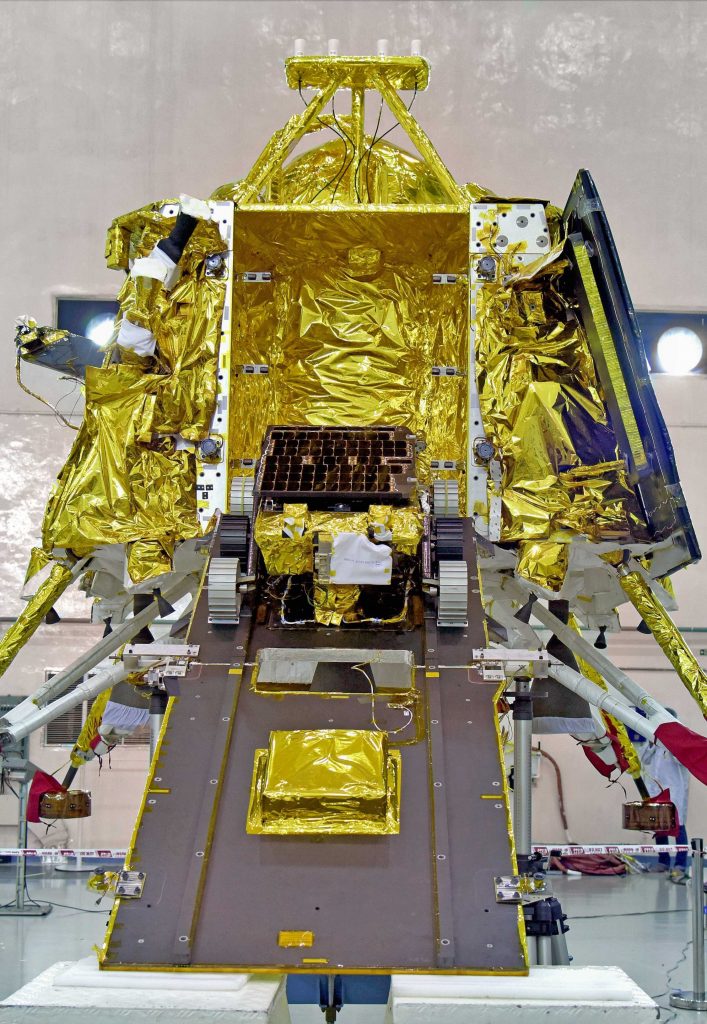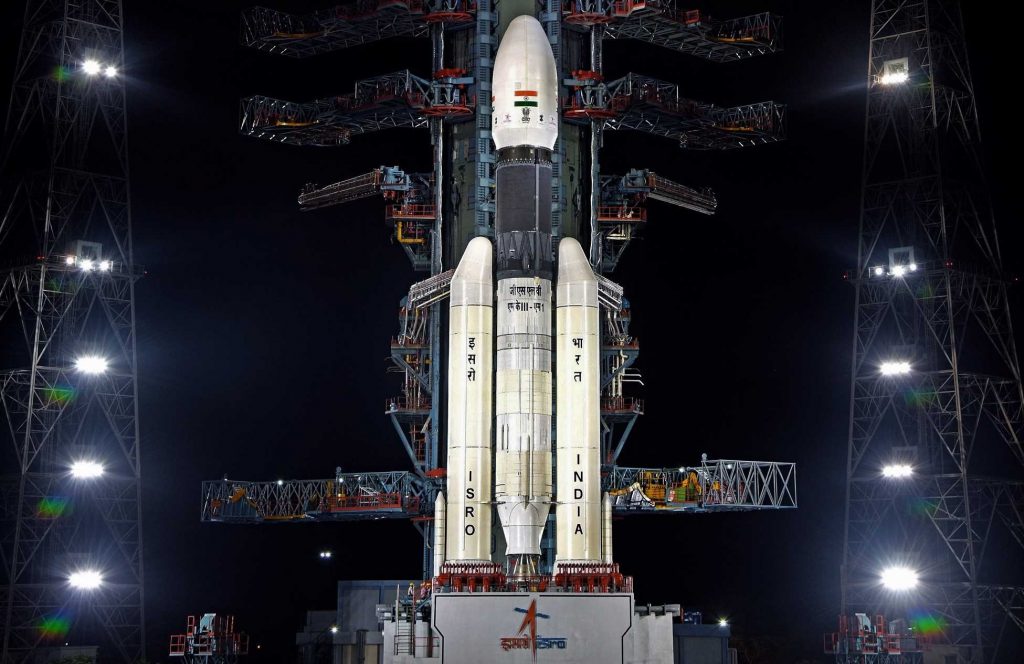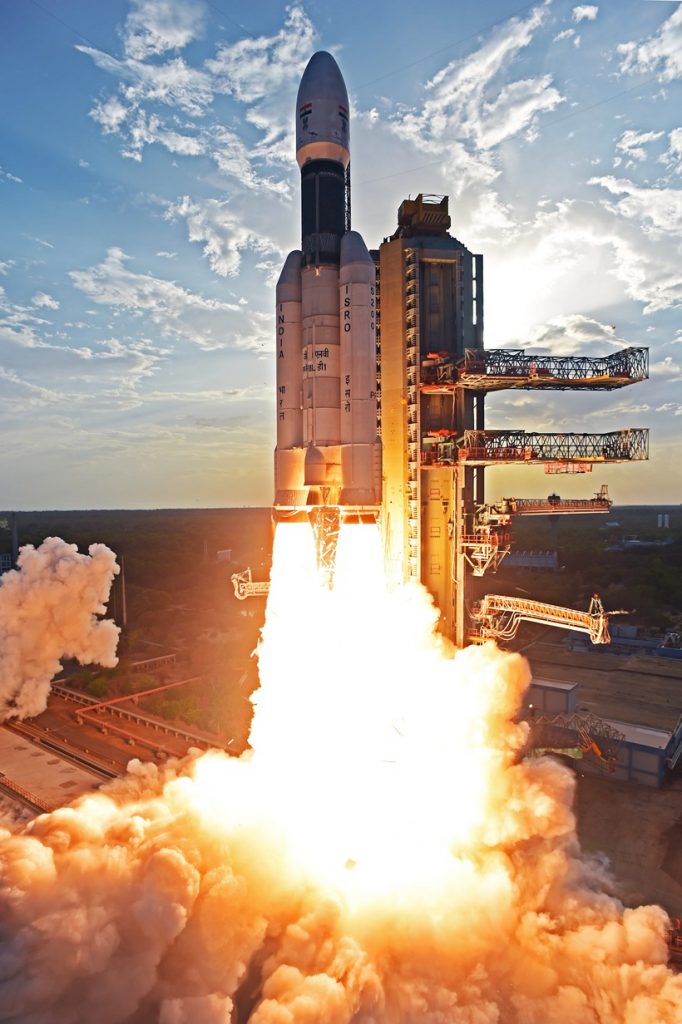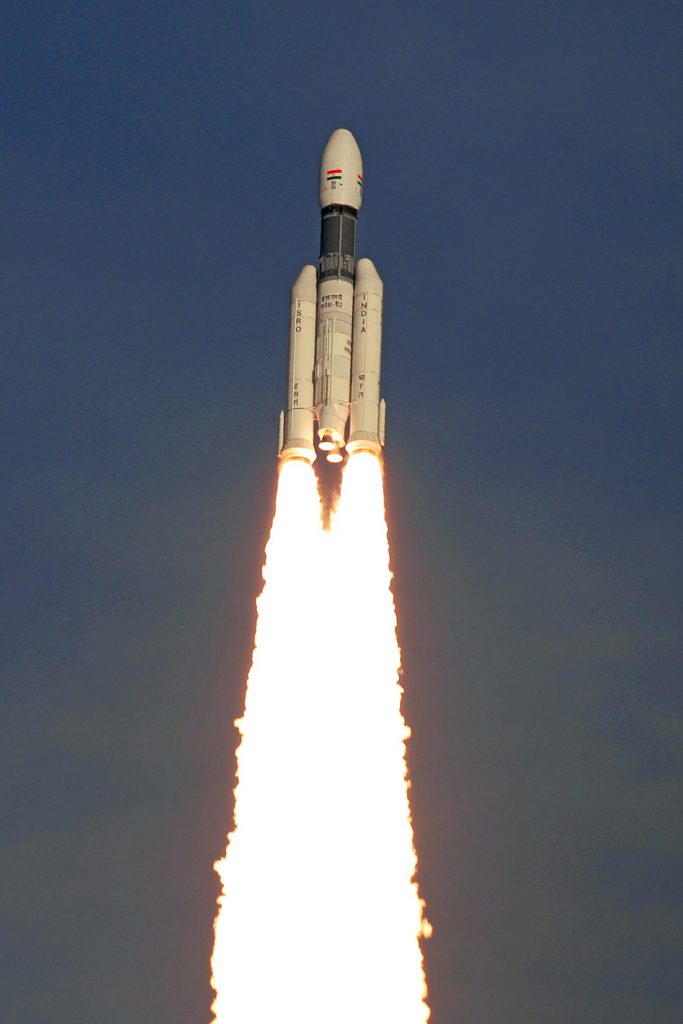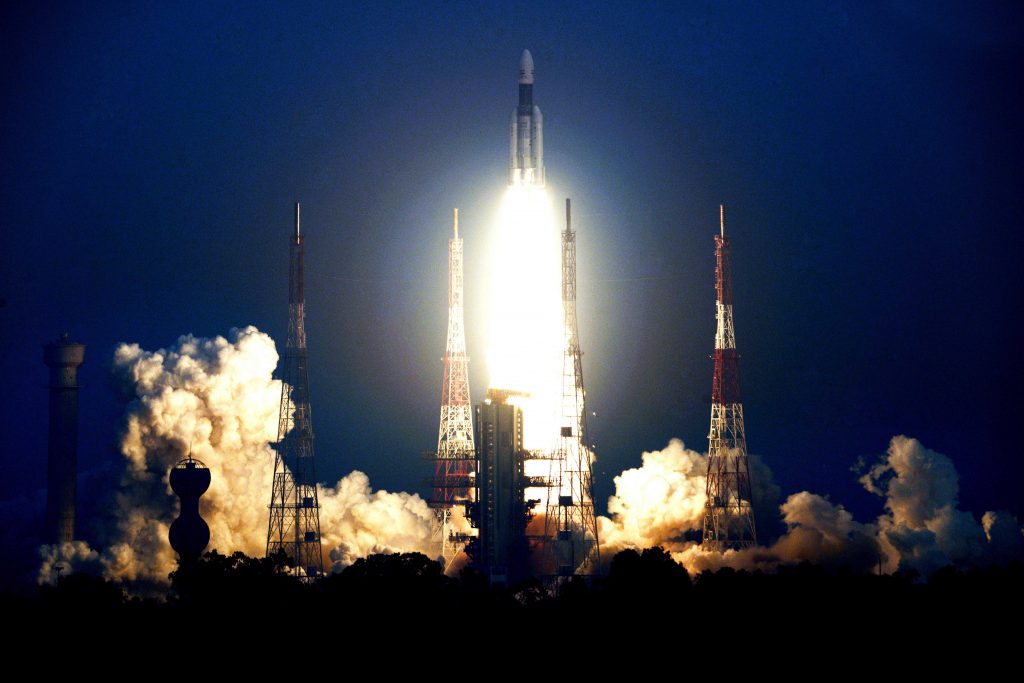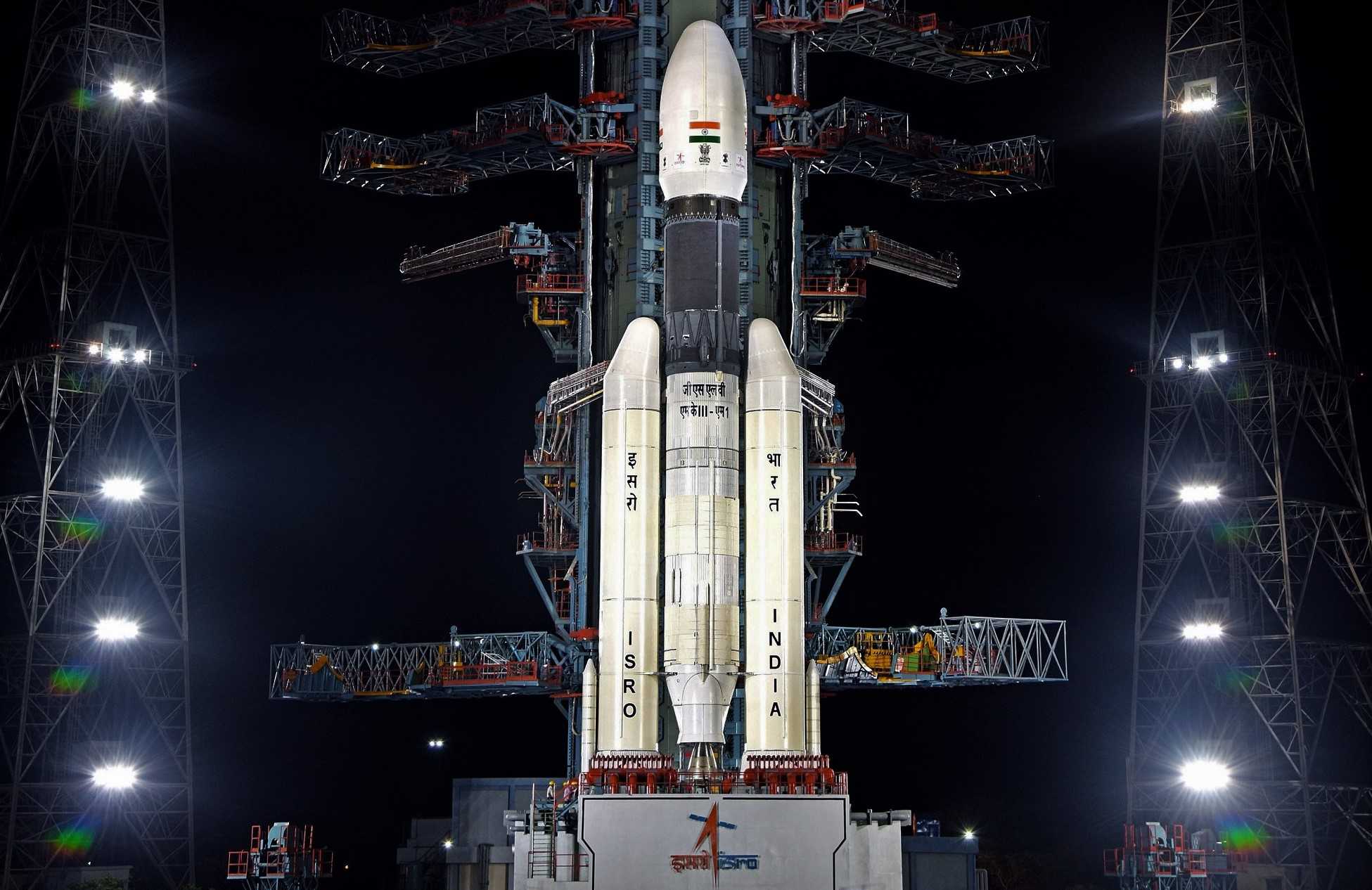
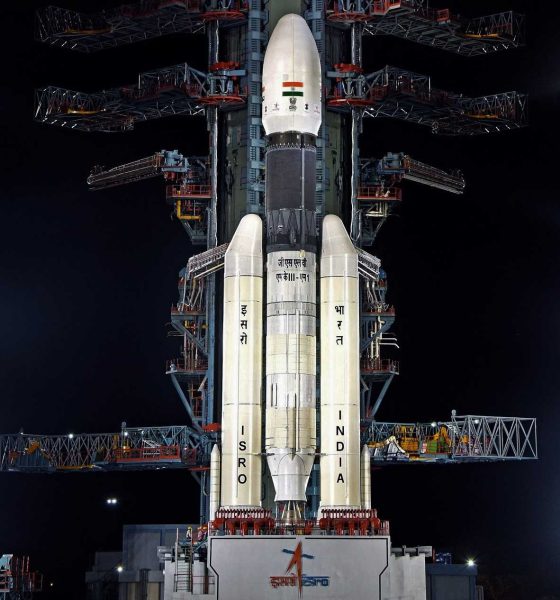
News
India could become the fourth country ever to soft-land a spacecraft on the Moon next week
The Indian Space Research Organization (ISRO) is perhaps just a few weeks (maybe days) away from attempting to place the country in the history books, hopefully setting India up to become the fourth nation on Earth – after the Soviet Union, United States, and China – to successfully soft-land on the Moon.
Known as Chandrayaan-2, the mission seeks to simultaneously launch a lunar orbiter, lander, and rover, altogether weighing nearly 3900 kg (8600 lb) at liftoff. If successful, the trio of spacecraft will remain integrated for about two months as the orbiter slowly raises its Earth orbit to eventually intercept and begin orbiting the Moon. Although originally expected to launch on Sunday, July 14th (July 15th local time), a bug with the Indian-built launch vehicle’s upper stage has pushed Chandrayaan-2 outside its original launch window, which ended today (July 16th). Depending on the complexity of the mission profile ISRO is using, the delay should be no more than a few days to a few weeks before the next launch window opens.
Editor’s note: Following ISRO’s July 15th scrub, the Chandrayaan-2 Moon lander mission has been rescheduled for launch no earlier than (NET) 2:43 pm local time, July 22nd (2:13 am PDT/9:13 UTC, July 23rd).
Fourth to the Moon (in one piece)
- All the way back in 1966, the Soviet Union (USSR) became the first to successfully soft-land an uncrewed spacecraft on the Moon with a mission known as Luna-9. Some four months after the momentous achievement, the United States became the second, safely landing Surveyor-1 on the Moon in June 1966.
- At the height of the space race, huge amounts of money was being funneled into these milestones, permitting the companies, institutions, and space agencies building, launching, and operating the individual missions to almost throw hardware at the metaphorical wall until something stuck. With the Soviet space program, this involved 17 failures, two successes, and one partial success in the first 7 years of the Luna initiative, culminating in Luna 9’s successful landing in February 1966.
- The US had three major separate programs known as Ranger, Lunar Orbiter, and Surveyor, the former of which was meant to simply fly past or impact the Moon to acquire detailed photos of its surface. Ranger suffered five consecutive failures and one partial failure before three full successes, while Orbiter was a complete success (5/5) and Surveyor failed only 2 of 7 attempts.
- Ultimately, this little snippet of history is simply meant to emphasize the utterly different approaches of those pathfinder programs relative to modern exploration efforts. In the case of ISRO’s Chandrayaan-2, failure would likely mean several years of delays before the next possible attempt – there is no concurrent (verging on mass-) production of multiple spacecraft like there was with Surveyor and Luna.
- Just shy of 50 years after the back-to-back first and second soft landings of Luna-9 and Surveyor-1, China became the third nation on Earth to successfully soft-land on the Moon with its 2013 Chang’e-3 mission, featuring a lander and rover. This was followed by Chang’e-4 in 2018, which continues to successfully operate 8 months after achieving the first successful soft-landing on the far side of the Moon.
- Finally, just several months ago, private company SpaceIL – supported by Israeli aerospace company IAI – attempted (albeit unsuccessfully) to make Israel the fourth country to land on the Moon.
Indian spacecraft, Indian rocket
- This finally brings us to Chandrayaan-2, what can only be described as a continuation of a recent resurgence in interest and serious robotic exploration of the Moon. Once it launches, the mission will take roughly 56 days to get into position for an attempted soft-landing. Prior to landing, the orbiter – in a circular, 100-km (62 mi) lunar orbit – will actively scout the intended landing site with a high-resolution ~0.3m/pixel camera to help the lander avoid any dangerous terrain.
- Once complete, the lander – carrying a tiny, ~27 kg (60 lb) rover – will begin its deorbit and landing maneuvers, hopefully culminating in a successful, gentle landing near the Moon’s South pole.
- Sadly, the Vikram lander and Pragyaan rover have an expected life of just one lunar day after landing, translating to ~14 Earth days or ~340 hours. This is a strong indicator that the Chandrayaan-2 landing component was not designed to survive the ultra-cold and harsh lunar night, also ~14 Earth days long.
- This isn’t much of a surprise, as surviving the lunar night is a whole different challenge that is rarely worth the hardware, effort, and funding required until the first prerequisite – a soft landing on the Moon – has been successfully demonstrated.
- A follow-up mission known as Chandrayaan-2 has already been proposed and would likely permit far lengthier exploration of the lunar south pole if India and launch partner Japan choose to move forward with it.
- Chandrayaan-2 will be launched on an Indian-built Geosynchronous Satellite Launch Vehicle (GSLV) Mk III-D2 rocket, the most powerful rocket in India’s arsenal. Although GSLV Mk III weighs significantly more than SpaceX’s
- Falcon 9 when fully fueled (640 metric tons to F9’s 550), the rocket is almost a third less capable to Low Earth Orbit (LEO) – 8000 kg to F9’s ~23,000 kg.
- However, thanks to the development of an efficient liquid hydrogen/oxygen (hydrolox) upper stage and engine, the rocket comes into its own when dealing with its namesake – geostationary (i.e. high-altitude) satellite launches. To GTO, GSLV Mk III is reportedly capable of launching at least 4000 kg, almost half of Falcon 9’s expendable performance and almost 75% as much as Falcon 9 with booster landing.
- Even more impressive is the cost: ISRO purchased a block of 10 GSLV Mk III rockets in 2018 for roughly $630M, translating to ~$63M per rocket, nearly equivalent to Falcon 9’s own list price of $62M. This places GSLV Mk III around the same level as Russia’s Proton-M rocket in terms of a cost-to-performance ratio, still second to Falcon 9 in most cases. GSLV Mk III has only launched three times (all successful) since its 2014 debut and Chandrayaan-2 will be its fourth launch.

News
Tesla Europe rolls out FSD ride-alongs in the Netherlands’ holiday campaign
The festive event series comes amid Tesla’s ongoing push for regulatory approval of FSD across Europe.
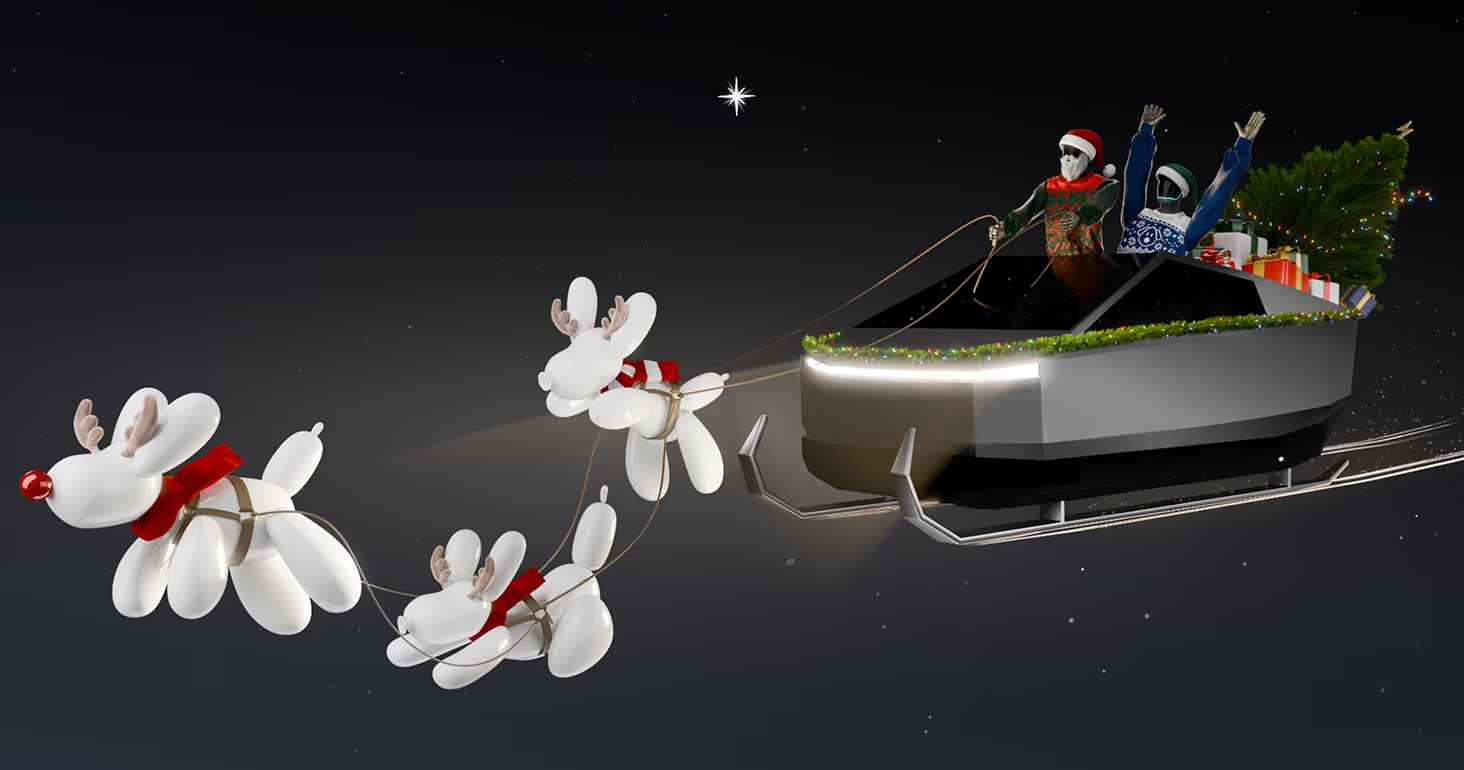
Tesla Europe has announced that its “Future Holidays” campaign will feature Full Self-Driving (Supervised) ride-along experiences in the Netherlands.
The festive event series comes amid Tesla’s ongoing push for regulatory approval of FSD across Europe.
The Holiday program was announced by Tesla Europe & Middle East in a post on X. “Come get in the spirit with us. Featuring Caraoke, FSD Supervised ride-along experiences, holiday light shows with our S3XY lineup & more,” the company wrote in its post on X.
Per the program’s official website, fun activities will include Caraoke sessions and light shows with the S3XY vehicle lineup. It appears that Optimus will also be making an appearance at the events. Tesla even noted that the humanoid robot will be in “full party spirit,” so things might indeed be quite fun.
“This season, we’re introducing you to the fun of the future. Register for our holiday events to meet our robots, see if you can spot the Bot to win prizes, and check out our selection of exclusive merchandise and limited-edition gifts. Discover Tesla activities near you and discover what makes the future so festive,” Tesla wrote on its official website.
This announcement aligns with Tesla’s accelerating FSD efforts in Europe, where supervised ride-alongs could help demonstrate the tech to regulators and customers. The Netherlands, with its urban traffic and progressive EV policies, could serve as an ideal and valuable testing ground for FSD.
Tesla is currently hard at work pushing for the rollout of FSD to several European countries. Tesla has received approval to operate 19 FSD test vehicles on Spain’s roads, though this number could increase as the program develops. As per the Dirección General de Tráfico (DGT), Tesla would be able to operate its FSD fleet on any national route across Spain. Recent job openings also hint at Tesla starting FSD tests in Austria. Apart from this, the company is also holding FSD demonstrations in Germany, France, and Italy.
News
Tesla sees sharp November rebound in China as Model Y demand surges
New data from the China Passenger Car Association (CPCA) shows a 9.95% year-on-year increase and a 40.98% jump month-over-month.
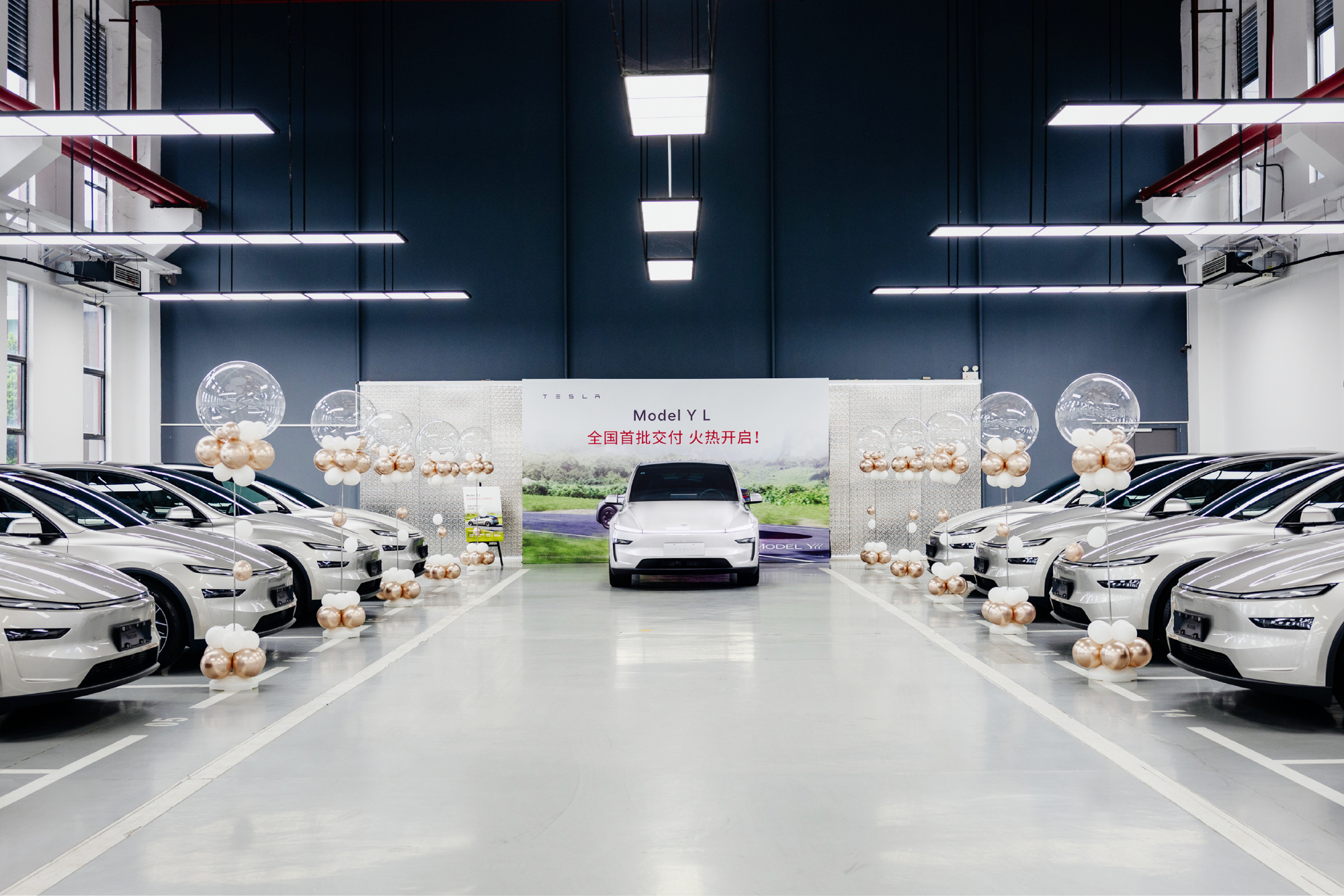
Tesla’s sales momentum in China strengthened in November, with wholesale volumes rising to 86,700 units, reversing a slowdown seen in October.
New data from the China Passenger Car Association (CPCA) shows a 9.95% year-on-year increase and a 40.98% jump month-over-month. This was partly driven by tightened delivery windows, targeted marketing, and buyers moving to secure vehicles before changes to national purchase tax incentives take effect.
Tesla’s November rebound coincided with a noticeable spike in Model Y interest across China. Delivery wait times extended multiple times over the month, jumping from an initial 2–5 weeks to estimated handovers in January and February 2026 for most five-seat variants. Only the six-seat Model Y L kept its 4–8 week estimated delivery timeframe.
The company amplified these delivery updates across its Chinese social media channels, urging buyers to lock in orders early to secure 2025 delivery slots and preserve eligibility for current purchase tax incentives, as noted in a CNEV Post report. Tesla also highlighted that new inventory-built Model Y units were available for customers seeking guaranteed handovers before December 31.
This combination of urgency marketing and genuine supply-demand pressure seemed to have helped boost November’s volumes, stabilizing what had been a year marked by several months of year-over-year declines.
For the January–November period, Tesla China recorded 754,561 wholesale units, an 8.30% decline compared to the same period last year. The company’s Shanghai Gigafactory continues to operate as both a domestic production base and a major global export hub, building the Model 3 and Model Y for markets across Asia, Europe, and the Middle East, among other territories.
Investor's Corner
Tesla bear gets blunt with beliefs over company valuation
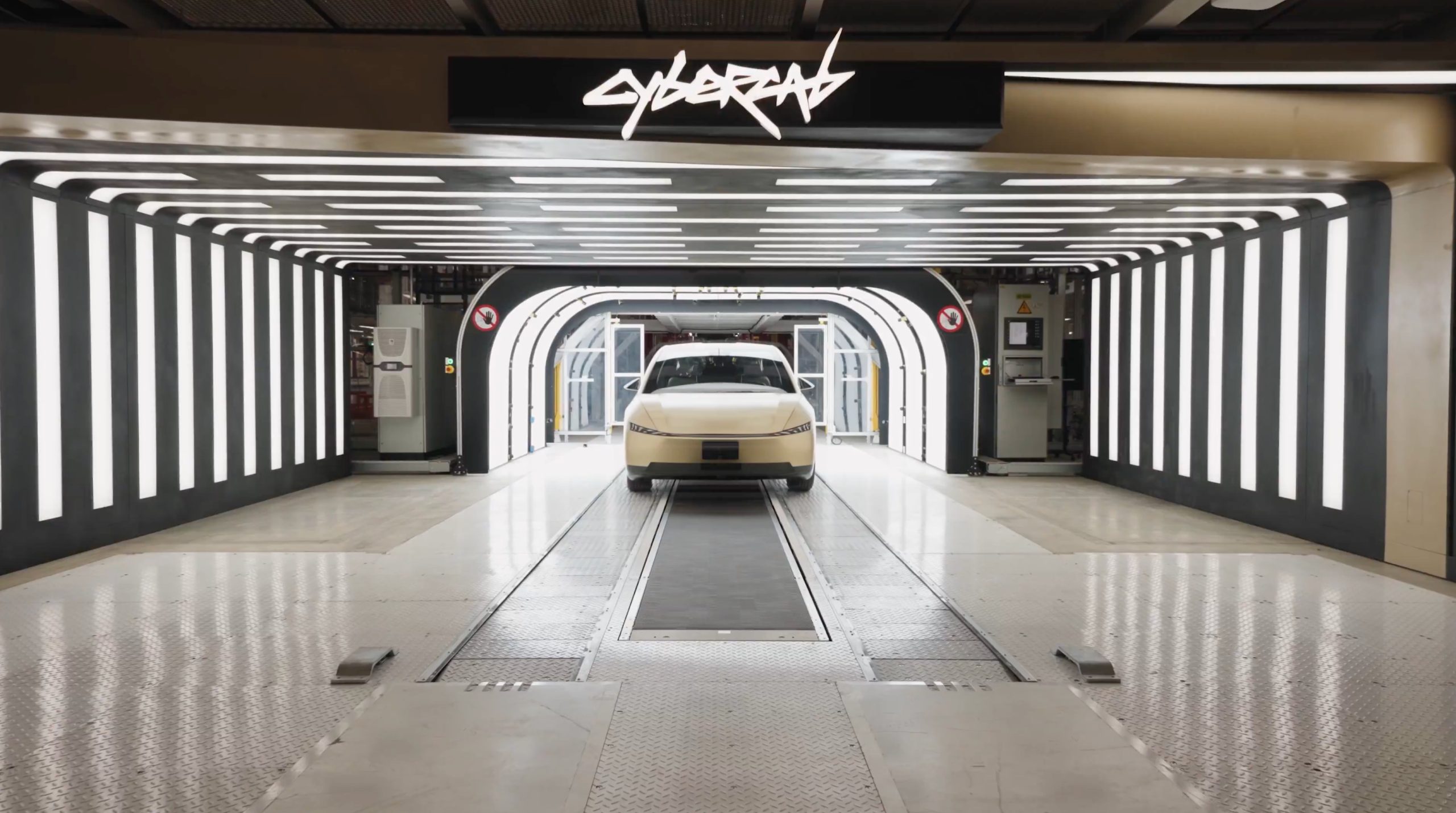
Tesla bear Michael Burry got blunt with his beliefs over the company’s valuation, which he called “ridiculously overvalued” in a newsletter to subscribers this past weekend.
“Tesla’s market capitalization is ridiculously overvalued today and has been for a good long time,” Burry, who was the inspiration for the movie The Big Short, and was portrayed by Christian Bale.
Burry went on to say, “As an aside, the Elon cult was all-in on electric cars until competition showed up, then all-in on autonomous driving until competition showed up, and now is all-in on robots — until competition shows up.”
Tesla bear Michael Burry ditches bet against $TSLA, says ‘media inflated’ the situation
For a long time, Burry has been skeptical of Tesla, its stock, and its CEO, Elon Musk, even placing a $530 million bet against shares several years ago. Eventually, Burry’s short position extended to other supporters of the company, including ARK Invest.
Tesla has long drawn skepticism from investors and more traditional analysts, who believe its valuation is overblown. However, the company is not traded as a traditional stock, something that other Wall Street firms have recognized.
While many believe the company has some serious pull as an automaker, an identity that helped it reach the valuation it has, Tesla has more than transformed into a robotics, AI, and self-driving play, pulling itself into the realm of some of the most recognizable stocks in tech.
Burry’s Scion Asset Management has put its money where its mouth is against Tesla stock on several occasions, but the firm has not yielded positive results, as shares have increased in value since 2020 by over 115 percent. The firm closed in May.
In 2020, it launched its short position, but by October 2021, it had ditched that position.
Tesla has had a tumultuous year on Wall Street, dipping significantly to around the $220 mark at one point. However, it rebounded significantly in September, climbing back up to the $400 region, as it currently trades at around $430.
It closed at $430.14 on Monday.

